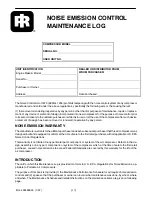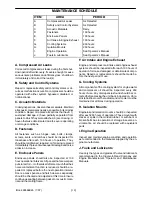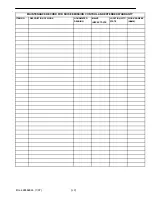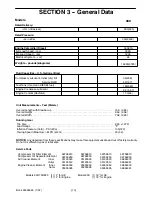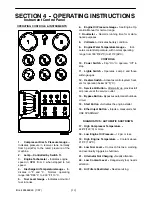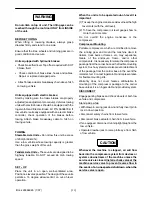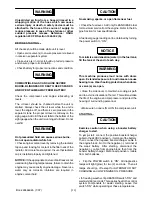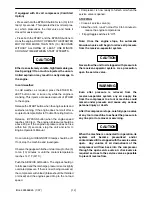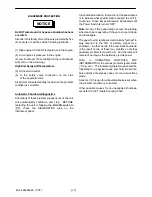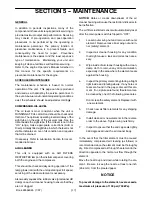
27
( )
Book 22464945 (1/07)
SECTION 5 -- MAINTENANCE
GENERAL
In addition to periodic inspections, many of the
components in these units require periodic servicing to
provide maximum output and performance. Servicing
may consist of pre--operation and post--operation
procedures to be performed by the operating or
maintenance personnel. The primary function of
preventive maintenance is to prevent failure, and
consequently, the need for repair.
Preventive
maintenance is the easiest and the least expensive
type of maintenance. Maintaining your unit and
keeping it clean at all times will facilitate servicing.
Refer to the engine Operator’s Manual furnished in
this manual for the specific requirements on
preventive maintenance for the engine.
SCHEDULED MAINTENANCE
The maintenance schedule is based on normal
operation of the unit. This page can be reproduced
and used as a checklist by the service personnel. In
the event unusual environmental operating conditions
exist, the schedule should be adjusted accordingly.
COMPRESSOR OIL LEVEL
The oil level is most consistent when the unit is
RUNNING AT FULL LOAD and should be checked at
this time. The optimum operating level is midway of the
sight tube on the side of the receiver tank. See the
decal beside the sight tube. If the oil level is not in the
“OK” range, make appropriate corrections (Add or
Drain). A totally filled sight tube in which the level is not
visible indicates an over--full condition and requires
that oil be drained.
If necessary, Refer to Lubrication Section for recom-
mended lubricant.
AIR CLEANER
This unit is equipped with an AIR FILTERS
RESTRICTED lamp on the instrument panel, covering
both the engine and the compressor.
This should be checked daily during operation. If the
lamp glows (red) with the unit operating at full speed,
servicing of the cleaner element is necessary.
Also weekly squeeze the rubber valve (precleaner dirt
dump) on each air cleaner housing to ensure that they
are not clogged.
NOTICE:
Holes or cracks downstream of the air
cleaner housing will cause the restriction indicators to
be ineffective.
The air filters restricted sensor will automatically reset
after the main power switch is flipped to “OFF.”
1.
Loosen outer wing nut and remove with outer
element. Remove loose inner wing nut and in-
ner (safety) element.
2.
Inspect air cleaner housing for any condition
that might cause a leak and correct as neces-
sary.
3.
Wipe inside of air cleaner housing with a clean,
damp cloth to remove any dirt accumulation,
especially in the area where the element seals
against the housing.
4.
Inspect the primary element by placing a bright
light inside and rotating slowly. If any holes or
tears are found in the paper, discard this ele-
ment. If no ruptures are found, the element can
be cleaned by one of the following procedures.
Do not clean the safety element. Replace it with
a new element.
5.
Check new air filter elements for any shipping
damage.
6.
Install cleaned or new elements in the reverse
order to the above. Tighten wing nuts firmly.
7.
Inspect to ensure that the end cap seals tightly
360 degrees around the air cleaner body.
In the event that the filter element must be reused
immediately, compressed air cleaning (as follows) is
recommended since the element must be thoroughly
dry. Direct compressed air through the element in the
direction opposite to the normal air flow through the
element.
Move the nozzle up and down while rotating the ele-
ment. Be sure to keep the nozzle at least one inch
(25.4 mm) from the pleated paper.
NOTICE
To prevent damage to the element, never exceed a
maximum air pressure of 100 psi (700 kPa).





